Before the Toyota Prius debuted in Japan, the idea of a mass-produced hybrid vehicle didn’t seem viable. Its name was derived from the Latin term for “before,” which in hindsight was a fitting name because it paved the way for Toyota’s hybrid revolution.
Toyota marketed the Prius as the car for the 21st century, combining a gas-powered engine with an electric motor that’s powerful enough to propel the vehicle.
The Prius has gone through a total of five generations as of writing, and it will only continue to move forward. Here are the most memorable models to go down in history.
1997 Toyota Prius: The First of Many

No Prius enthusiast can forget the 1997 model. Its success blazed a trail for other automakers to follow the hybrid vehicle roadmap.
The 1997 model was the pioneer of the first mass-produced hybrid vehicle. It was part of Toyota’s five-year plan to develop a practical and low-emission family vehicle.
The 1997 Prius was a by-product of the Japanese automaker’s dedication to taking automotive engineering to the next level.
Toyota wasn’t the first automaker to take on the challenge of producing a hybrid vehicle. Many have tried, but the automaker was the first to overcome the engineering and technical issues that plagued the hybrid concept.
The 1997 Prius was the first vehicle to sport the Toyota Hybrid System (THS), an integrated package that had the engine, electric motor, and gearbox mounted transversely for space-optimization purposes.
Aside from the usual hybrid vehicle components like the high-torque electric drive motor and nickel-metal hydride battery pack, this Prius also ran on an Atkinson engine cycle that made more expansion strokes than compression ones for enhanced fuel efficiency.
The hybrid setup inevitably made the 1997 Prius a slow vehicle. The upside, however, is that it generated instant torque that increased the model’s tractability.
- Engine: 1.5L inline four-cylinder
- Horsepower: 58 hp (engine) 40 hp (electric motor)
- Torque: 75 lb-ft
- 0-60 mph: 14.1s
- Fuel economy: 46.1 mpg (combined)
2000 Toyota Prius: Expanded Horizon
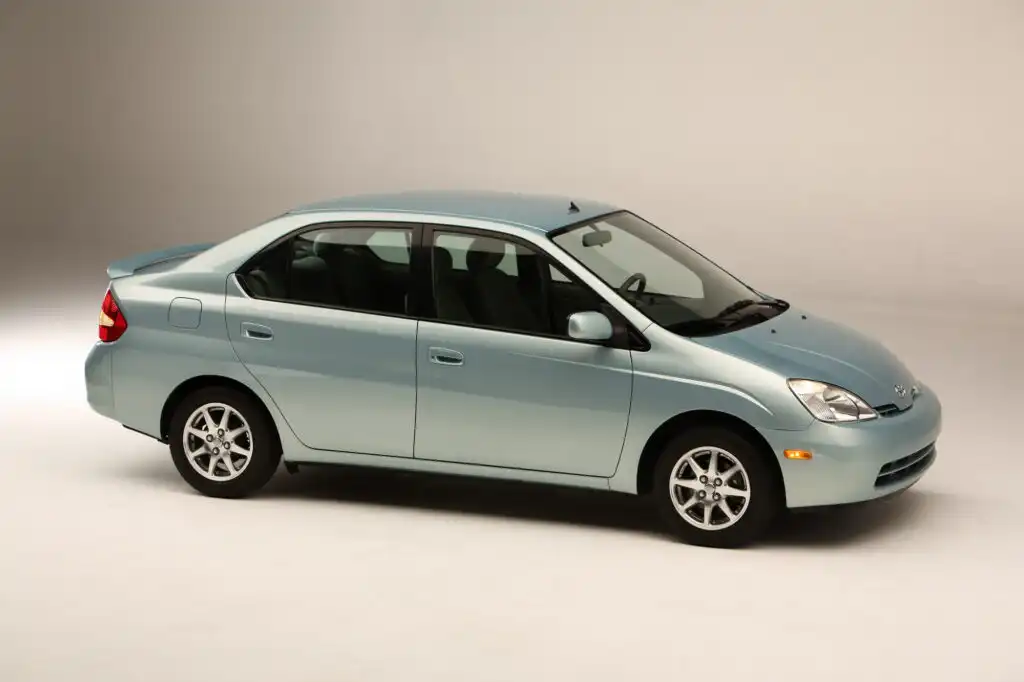
Although the Prius debuted in 1997, it wasn’t until the year 2000 that the rest of the world got to see the hybrid vehicle’s full potential.
The 2000 redesign started the model’s second generation in Japan, but it was the first model year that was sold in Europe, North America, Australia, and the rest of Asia.
In the United States, the 2000 Prius was marketed between the smaller Corolla and the larger Camry.
The 2000 Prius was also the second mass-produced hybrid vehicle to grace the American streets next to the Honda Insight. It had all the standard features you’ll find in a hybrid, including electric power steering and regenerative braking.
The 2000 Prius was sold in three trim levels: standard, base, and touring. It also had a continuously variable transmission (CVT).
Drivers of the 2000 Prius also enjoyed the benefit of having an LED screen that displayed the hybrid’s power flow and eco-credentials.
This Prius model was branded as an ultra-low-emission vehicle. But as convenient as it was, it still had its downsides 一 one of which was that it had restricted cargo space due to the battery pack.
- Engine: 1.5L inline four-cylinder
- Horsepower: 72 hp (engine) 44 hp (electric motor)
- Torque: 85 lb-ft.
- 0-60 mph: 12.7s
- Fuel economy: 46.1 mpg (combined)
2004 Toyota Prius: The Hybrid on a Mission
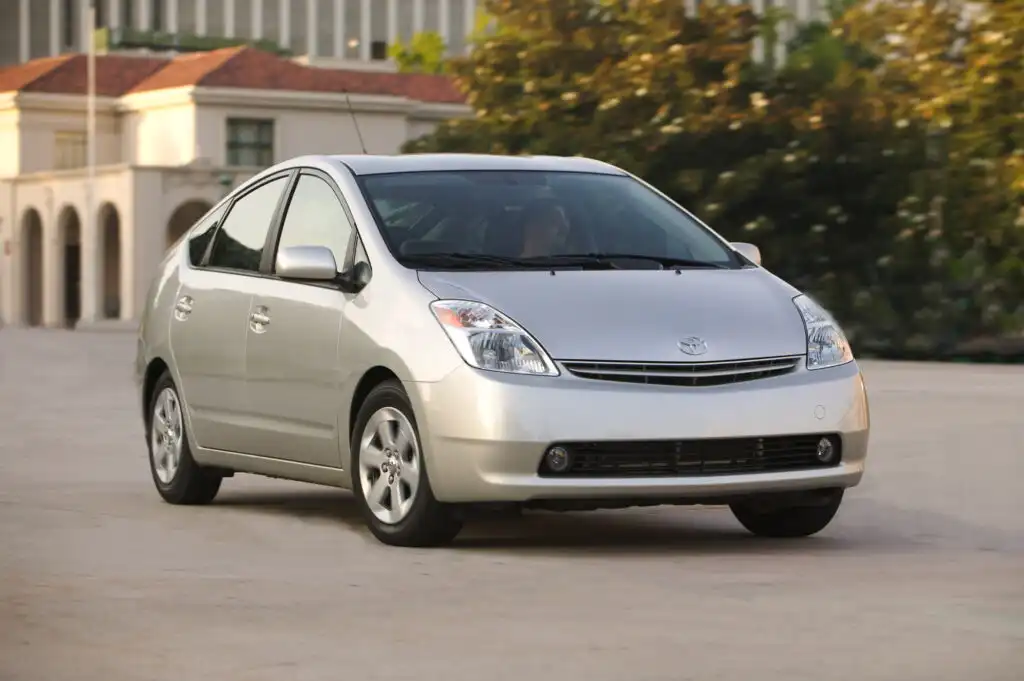
The goal for Toyota was to continuously work on improving the Prius, and the developers certainly understood the assignment when the 2004 model rolled out of the factory.
Back to sporting a hatchback design, the 2004 Prius was marketed as a practical and friendly-looking vehicle for families.
The 2004 Prius was also the first model to use Toyota’s second-generation hybrid drivetrain system known as Hybrid Synergy Drive (HSD).
This system aimed to resolve the balancing issues between gas and electric motors. With the Hybrid Synergy Drive, electric motors were modified for increased range, which significantly reduced the load shouldered by the gas engine under peak performance.
The Atkinson engine cycle that’s been a standard feature on the Prius was also modified to offer 8% more power than before.
In terms of interior features, the 2004 Prius was remodeled to have more cabin space, and the dashboard was modernized for a more contemporary look.
The 2004 Prius was classified as a super ultra-low emissions vehicle and a certified advanced technology partial zero emission vehicle.
Overall, the 2004 Prius had a 15% improved fuel consumption. The model also saw significant improvement in terms of top speed compared to the previous generation.
- Engine: 1.5L inline four-cylinder
- Horsepower: 76 hp (engine) 34 hp (electric motor)
- Torque: 82 lb-ft
- 0-60 mph: 9.8s
- Fuel economy: 46.1 mpg (combined)
2009 Toyota Prius: A Worthy Competitor
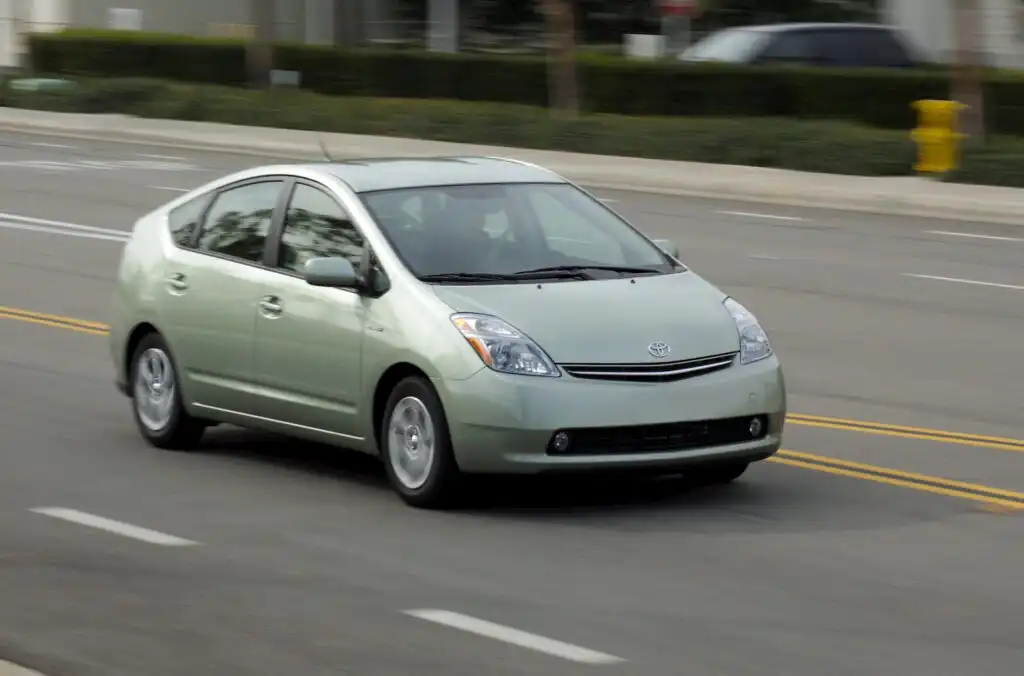
In an effort to overtake the sales of the Honda Insight, Toyota sought to slash the Prius’ price tag.
Thanks to the huge price difference and exceptional features, the 2009 Prius sold like hotcakes. The model even won Car of the Year in Japan for the second time.
By this time, the Prius had already been branded as the most advanced mainstream car on the market.
For the 2009 redesign, Toyota aimed to create another version of the Prius that had better fuel economy and performance, as well as reduced lifecycle emissions compared to the previous models.
To achieve this, the automaker equipped the 2009 Prius with a larger Atkinson cycle engine and a smaller and lighter Hybrid Synergy Drive system.
The 2009 Prius had three driving modes: EV, Eco, and Power.
EV mode could have the car running on electric power alone for up to 1.2 miles. Eco mode controlled aggressive throttle inputs and adjusted air conditioning for improved fuel economy. Lastly, Power mode augmented throttle inputs by up to 50% for increased performance.
In terms of the interior, the 2009 Prius sported a sweeping monobox look for a minimalist style.
- Engine: 1.5L inline four-cylinder
- Horsepower: 76 hp (engine) 67 hp (two electric motors)
- Torque: 82 lb-ft
- 0-60 mph: 10.4s
- Fuel economy: 46 mpg (combined)
2013 Toyota Prius V: Reliable as Ever
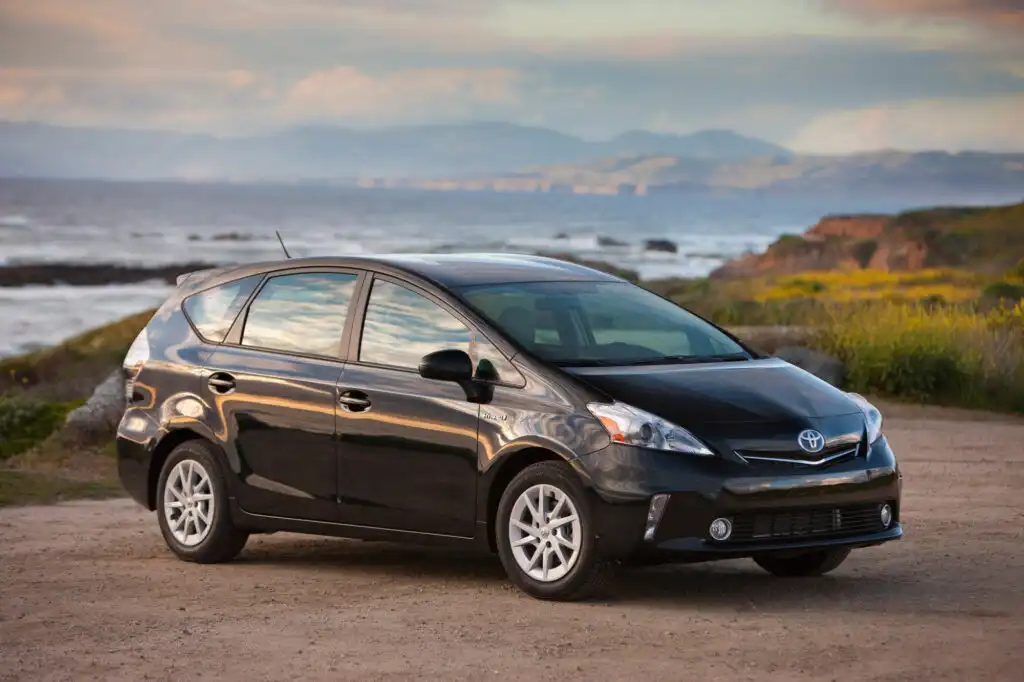
The 2013 Prius V is the third model year for the V lineup. Also known as the Prius Versatile, the Prius V was the first Prius variant to be spun off from the model’s platform.
Unlike the original Prius, the Prius V was marketed as a compact MPV with a hybrid drivetrain.
The 2013 Prius V is essentially a wider Prius. It’s six inches wider and longer and three inches taller than the hatchback.
Like the original Prius, the 2013 Prius V also carried the same Atkinson cycle engine. It was also developed using the Hybrid Synergy Drive system.
So what exactly sets the V lineup apart from the original Prius?
It all boils down to the powertrain and the extra legroom that came with the wagon setup.
The 2013 Prius V came with a “pitch and bounce” motor control for improved ride comfort when traversing over rough and uneven roads.

- Engine: 1.8L inline four-cylinder
- Horsepower: 98 hp (engine) 36 hp (electric motor)
- Torque: 105 lb-ft
- 0-60 mph: 10.4s
- Fuel economy: 42 mpg (combined)
Any information provided on this Website is for informational purposes only and is not intended to replace consultation with a professional mechanic. The accuracy and timeliness of the information may change from the time of publication.





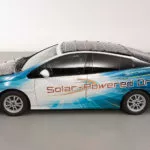

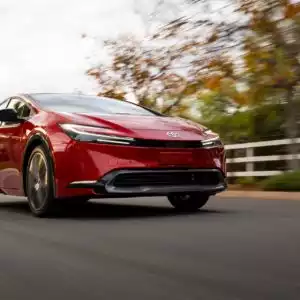











I agree this is a wonderful automobile, my 2013 Prius can go 400 miles on 8 gallons of regular gasoline, I have no complaints about this car, however I am disappointed with Toyota for not
standing up an having a recall when many of it’s customers who were experiencing “Catolitic converter thefts That were costing them $3500 dollars to replace and no help from Toyota except to offer a “So called protection shield that my adjuster said wasn’t worth the $500 dollars as the thrives simply cut right through with battery saws! So better design with protective methods in place may have changed the three Toyota Prius vehicles on my block alone that had there catolitic converters stolen and a rush for their owners to get rid of there once wonderful cars to prevent the new converter from being stolen at almost anytime you park your car . And if you don’t think this is not a major problem for Toyota, I was told by my insurance company adjuster that my theft was the 35 for that month alone…. My God Toyota, don’t you understand, I’ll never by a Toyota Prius again!! And maybe not another Toyota period again!!!you cost me $3500 …your rich I’m not. Solve the problem for us ! Or stop making automobiles.
Didn’t mention the brake unit that costs $4000 to replace. It was a common enough problem that they had a recall and gave a 10 year extension for the problem. That extension time is over now. I had to use it two years ago and luckily had the replacement done for free at a Toyota dealership. What happens for those, who buy the 2013 Toyota Prius V now?